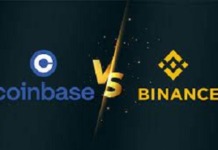Before delving into “what is crypto trading” and what its components are, let’s begin by understanding the concept of trade/trading.
Trading is a simple term that means the exchange of one good, commodity, or service between two persons, groups, or a third party to another. Trading is an act by which exchange is completed and disbursed to the last chain of supply known as the consumer.
WHAT IS CRYPTO OR CRYPTOCURRENCIES?
Cryptocurrency is simply a digital or virtual coin that is accepted as legal tender that is, it can be used as a means for payment of goods and services. It is any form of currency that exists digitally or virtually and uses cryptography to secure transactions.
It can also be regarded as a digital payment system that doesn’t rely on any bank to verify transactions. It functions as a peer-to-peer system that can enable anyone anywhere in the world to send and receive payment.
Crypto is the virtual coin that is run on a Blockchain, encoded in a series of codes from which a personal account is created similar to a bank’s balance sheet or ledger. Each currency has its own Blockchain which is an ongoing constantly re-verified record of every single transaction ever made using that currency.
According to Wikipedia, a cryptocurrency, crypto-currency, or crypto is a digital currency designed to work as a medium of exchange through a computer network that is not reliant on any central authority, such as a government or bank, to uphold or maintain it. Individual coin ownership records are stored in a digital ledger, which is a computerized database using strong cryptography to secure transaction records, control the creation of additional coins, and verify the transfer of coin ownership. It does not exist in physical form like paper money and is typically not issued by a central authority.
HISTORY OF CRYPTOCURRENCY.
A brief history of how crypto/cryptocurrency came into existence.
Source: Wikipedia
In 1983, the American cryptographer David Chaum conceived an anonymous cryptographic electronic money called ecash. Later, in 1995, he implemented it through Digicash, an early form of cryptographic electronic payments which required user software in order to withdraw notes from a bank and designate specific encrypted keys before they can be sent to a recipient. This allowed the digital currency to be untraceable by the issuing bank, the government, or any third party.
In 1996, the National security agency published a paper entitled — How to Make a Mint: the cryptography of Anonymous Electronic Cash, describing a cryptocurrency system, first publishing it in an MIT mailing list and later in 1997, in the American Law Review (vol. 46, issue 4).
In 1998, Wei Dai published a description of “b-money”, characterized as an anonymous, distributed electronic cash system. Shortly thereafter, Nick Szabo described it as bit gold.
Like bitcoin and other cryptocurrencies that would follow it, bit gold (not to be confused with the later gold-based exchange, BitGold) was described as an electronic currency system that required users to complete a proof of work function with solutions being cryptographically put together and published.
In 2009, the first decentralized cryptocurrency, bitcoin, was created by presumably pseudonymous developer Satoshi Nakamoto. It used SHA-256, a cryptographic hash function, in its proof-of-work scheme. In April 2011, Namecoin was created as an attempt at forming a decentralized DNS, which would make internet censorship very difficult. Soon after, in October 2011, Litecoin was released. It used Scrypt as its hash function instead of SHA-256. Another notable cryptocurrency, Peercoin, used a proof-of-work/ proof-of-stake hybrid.
On 6 August 2014, the UK announced its treasury had commissioned a study of cryptocurrencies, and what role, if any, they could play in the UK economy. The study was to report on whether regulation should be considered. Its final report was published in 2018, and it issued a consultation on crypto assets and stablecoins in January 2021.
In June 2021 El Salvador became the first country to accept bitcoin as legal tender after the legislative assembly had voted 62-22 to pass a bill submitted by President Nayib Bukele classifying the cryptocurrency as such.
In August 2021, Cuba followed with Resolution 215 to recognize and regulate cryptocurrencies such as bitcoin.
In September 2021, the government of China, the single largest market for cryptocurrency, declared all cryptocurrency transactions illegal, completing a crackdown on cryptocurrency that had previously banned the operation of intermediaries and miners with China.
HOW DOES CRYPTOCURRENCY WORK?
Cryptocurrency markets are decentralized, which means they are not issued or backed by a central authority such as a government. Instead, they run across a network of computers. However, cryptocurrencies can be bought and sold via exchanges and stored in “wallets”.
Unlike traditional currencies, they only exist as a shared digital record of ownership, stored on a blockchain. When a user wants to send cryptocurrency units to another user, they send it to that digital wallet. The transaction isn’t considered final until it has been verified and added to the blockchain through a process called mining. This is also a means by which cryptocurrencies are created.
WHAT IS CRYPTOCURRENCY MINING?
Cryptocurrency mining is the process by which recent cryptocurrency transactions are checked and new blocks are added to the blockchain.
THE CONCEPT OF BLOCKCHAIN
A Blockchain is a distributed database that is shared among the nodes of a computer network. As a database, a blockchain stores information electronically in digital format.
Furthermore, a blockchain is a type of shared database that differs from a typical database in the way that it stores information: blockchain stores information in blocks that are then linked together via cryptography. As new data comes in, it is entered into a fresh block, which makes the data chained together in chronological order.
In the case of bitcoin, blockchain is used in a centralized way so that no single person or group has control- rather. All users collectively retain control.
HOW DOES A BLOCKCHAIN WORK?
The primary function or aim of a blockchain is to allow digital information to be recorded and distributed, but not edited. By so doing, a blockchain becomes the foundation for immutable ledgers, or records of transactions that cannot be altered, deleted, or destroyed. Thus the name DLT which stands for distributed ledger technology — was first proposed as a research project in 1991.
Having dissected some concepts behind cryptocurrencies, let’s take a look at the subject matter:
Read Also: Top 5 Low Capital Businesses to Start in 2022
WHAT IS CRYPTO TRADING? (CRYPTOCURRENCY TRADING)
Crypto trading is the act of speculating on cryptocurrency price movements via a CDF trading account. In simpler terms, cryptocurrency trading is simply the buying and selling of the underlying coins via an exchange.
There are CDFs known as derivatives, which enable you to speculate on cryptocurrency price movements without taking ownership of the underlying coins.
They are leveraged products, meaning you only need to put a small deposit known as margin to gain full exposure to the underlying market. Your profit or loss is still calculated according to the full size of your position, so leverage will magnify both profits and losses.
SIMPLE TERMS USED IN CRYPTO TRADING.
Common terms used by traders in crypto trading.
- Go long: means to buy (buy order) usually when you feel and see the price is about to go up from a downward direction.
- Go short: means to sell (sell order) usually when you feel and see the price is about to go down from an upward direction.
- Bullish/bull: the act of a price action going up which means buyers are dominating the market at a particular time.
- Bearish/bear: the act of a price action going down which means sellers are dominating the market at a particular time.
- Trending: this means the market has a direction is heading either upward known as an uptrend or downwards known as a downtrend.
- Ranging or consolidating or consolidation: this means that the price action of the market is not trending but maintaining a level of movement at a particular time, that is, the market is not in an uptrend nor is it in a downtrend.
- Market capitalization: this is defined as the total number of coins in supply multiplied by the price. The formula for calculating it is CAP = SUPPLY x PRICE.
- DAO: An acronym that stands for Decentralized Autonomous Organisation.
- dApp: stands for decentralized application, which means a computer program that utilizes a blockchain for data storage, runs autonomously, is not controlled or operated from a single entity, is open source, and has its use incentivized by the reward of fees or tokens.
- Deterministic wallet: this type of wallet is created by producing multiple keys from a seed. If you lose this wallet, your wallet can be recovered from the seed. Plus, when you make transactions, instead of producing new keys each time, you use variations from the seed, which makes it more transferable and easier to store.
- Digital signature: used to confirm that a document being transmitted electronically is authentic. They generally appear as a code generated by public-key encryption.
- Dump: the term used to describe selling all or a lot of your cryptocurrency. When a lot of people holding a particular cryptocurrency dump at once, this causes a sharp downtrend movement in the cryptocurrency’s price.
- DYOR stands for Doing Your Own Research.
- GAS: Gas is a measurement given to an operation in the Ethereum network that relates to the computational power required to complete it. That measurement relates to the fee offered to miners who process that transaction. Other operations have a small cost of 3 to 10 gas, but a full transaction costs 21,000 gas.
- Gas limit: when users make a transaction on the Ethereum network, they set their gas limit, which is the most they are willing to pay as a fee for that transaction. If the transaction is going to cost more gas than what is offered, the transaction will not go through. If it costs less the difference will be refunded.
- Gas price/fee: a general reference for approximate transaction fees on the blockchain, gas price refers to the amount of ETH (in a small unit called gwei) that must be paid to miners for processing transactions on the network.
- HODL: an acronym that stands for “Hold on for dear life”. This is suitable for long-term investors who are expecting the price to skyrocket 10 times the value of their investment.
- Circulating supply: the total number of coins in a cryptocurrency that is in the publicly tradable space is considered the circulating supply. Some coins can be locked, reserved, or burned, therefore unavailable to public trading.
- Contract address: this is where your contract is stored in the Ethereum blockchain. An account in which you communicate (transact) with your deployed contract in the blockchain. It’s similar to the communication happening between your desktop and a website hosted on a remote server.
- Take profit: this is an order or instruction given to your broker to end the trade at a particular gain in order to maximize profits.
- Stop loss: this is an order or instruction given to your broker to end the trade at a particular loss in order to cut losses short.
- Breakeven: it simply adjusts your stop loss to your entry point in order to minimize your risk and probably secure some profits.
- Lot size: this is the amount or quantity of trade a trader wants to buy or sell.
- Pip: this is the smallest unit in which a cryptocurrency pair can change. Traders calculate their profits in pips. This is a one-digit movement in the price at a specific level. Generally, valuable cryptocurrencies are traded at the “dollar” level, so a move from the price of $150.00 to $151.00 for example, would mean that the cryptocurrency has moved one pip. However, some lower-value cryptocurrencies are traded at different scales, where a pip can be a cent or even a fraction of a cent.
- Entry: This is where a trader enters a trade while targeting a particular profit zone.
- Bid price: this is the price that the buyers are willing to buy.
- Ask price: this is the price that the sellers are willing to sell.
- Spread: this is the difference between the bid price and the asking price.
- Altcoin: an altcoin is a digital currency other than bitcoin. There were more than 1,000 altcoins listed on the data source Coin Market Cap. This can also be referred to as an alternative protocol asset, meaning that it follows a protocol (set of rules) that’s different than that of bitcoin.
- Arbitrage: this means taking advantage of the price difference between two different exchanges. If bitcoin is selling for $30,000 on one exchange and $31,000 on another, a trader can buy the digital currency on the first exchange and sell it on the second for a modest profit.
- Leverage: leverage is the means of gaining exposure to large amount amounts of cryptocurrency without having to pay the full value for the trade entered upfront. Instead, you put down a small deposit, known as a margin. When you close a leveraged position, your profit or loss is based on the full size of the trade.
- Integration: the extent to which the cryptocurrency easily integrates into existing infrastructure such as the eCommerce payment system.
- Press: the way cryptocurrency is portrayed in the media and how much coverage it is getting.
- Key events: major events such as regulatory updates, security breaches, and economic setbacks.
Read Also: Ten Painless Ways to Save Money Even When Your Paycheck Is Never Enough
Crypto Trading on an exchange (the act of buying and selling on exchange platforms)
When a user engages in crypto trading via an exchange, the user buys the coins themselves. The user needs to create an exchange account, put up the full value of the asset to open a position and store the cryptocurrency tokens in his/her own wallet until he/she is ready to sell.
Exchanges come with their own outrageous learning curve as one needs to get to know the technology that revolves around it and learn how to make sense of data. Many exchanges also have limits on how much one can deposit, while accounts can be very expensive to maintain.
SUMMARY.
The above research presents you with an idea of how cryptocurrencies came into existence, how it works and makes some clarification behind certain concepts. The cryptocurrency market moves according to supply and demand. However, as they are decentralized, they tend to remain free from many of the economic and political concerns that affect traditional currencies. While there is still a lot of uncertainty surrounding cryptocurrencies, the following factors can have a significant impact on their prices:
- Supply
- Market capitalisation
- Press
- Integration
- Key events
On the other hand, crypto trading is the act of speculating on cryptocurrency price movements via a CDF trading account. In simpler terms, cryptocurrency trading is simply the buying and selling of the underlying coins via an exchange.
There are CDFs known as derivatives, which enable you to speculate on cryptocurrency price movements without taking ownership of the underlying coins.







